Title: Georgetown Honors its First Rabbi, the Late Harold White
Georgetown remembers its much beloved Rabbi Harold White, who spent more than half a century at Georgetown teaching, counseling and promoting interreligious understanding.
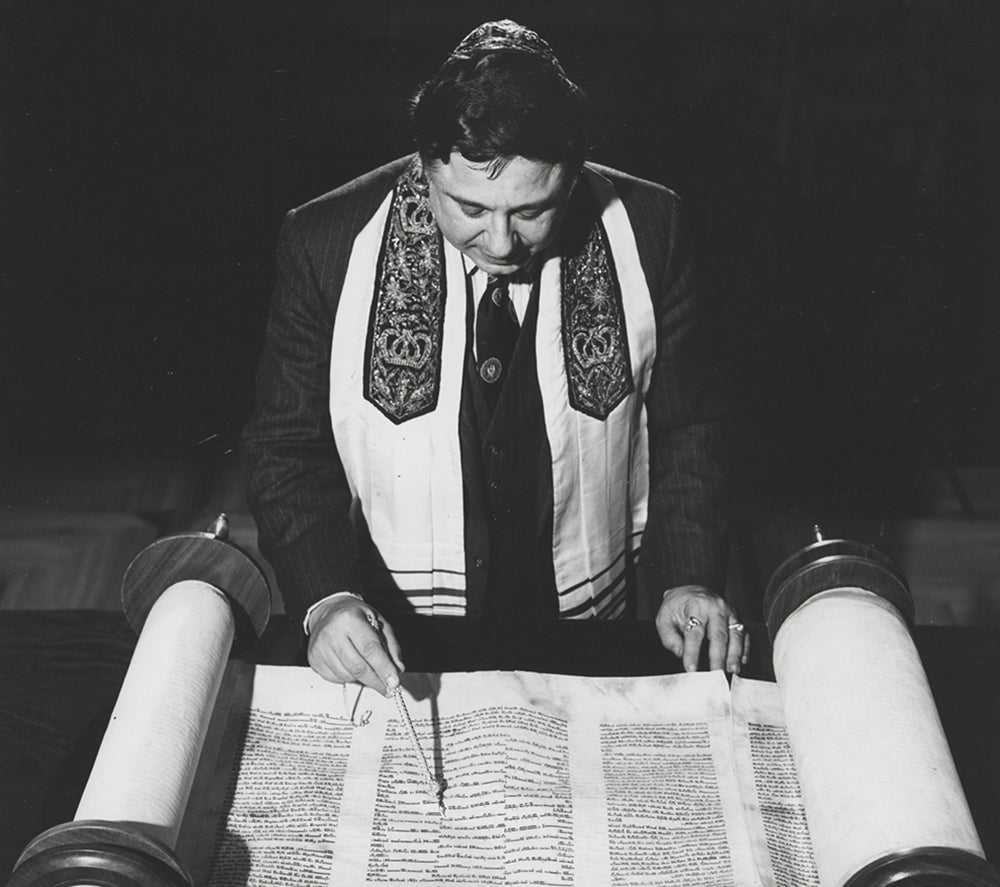
Much beloved Rabbi Harold White, the first rabbi hired by a U.S. Catholic university, who spent more than half a century at Georgetown teaching and counseling and promoting interreligious understanding, died this past Monday. He was 83.
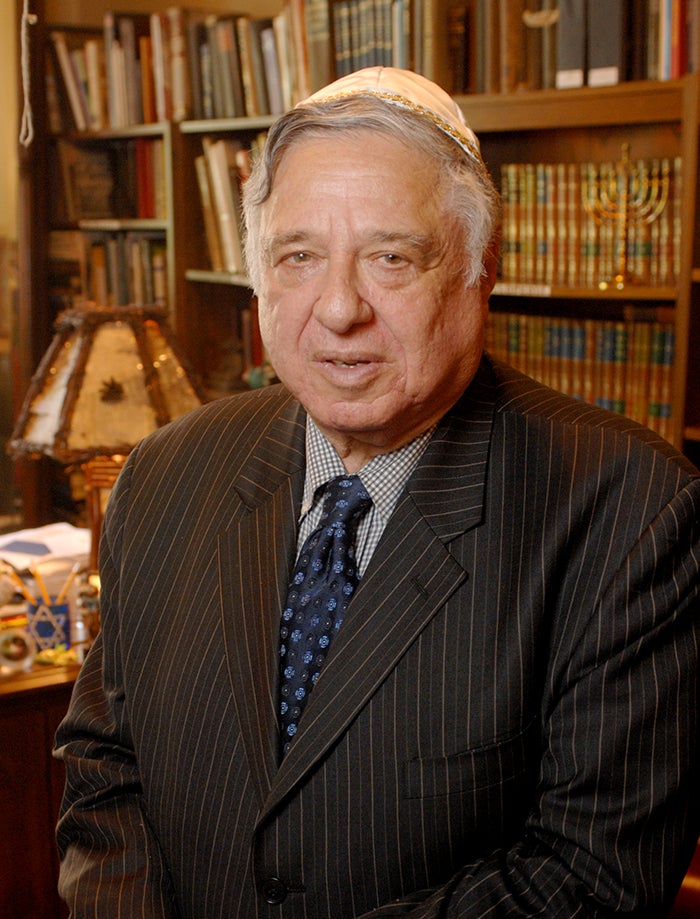
“Rabbi White’s devotion to our shared values and our mission as a community was unparalleled,” President John DeGioia said. “His leadership and vision in creating opportunities for dialogue strengthened our community and helped build the ethos of engagement that characterizes our campus ministry today. He will be deeply missed by our entire university community.”
White, who first visited Georgetown and Washington, D.C., in 1968, four days after the assassination of Martin Luther King Jr., was an iconic figure on and off campus.
Taking his place as the university’s rabbi in July of that year, he taught countless students across all faith traditions, led High Holy Days services, enhanced academic offerings focused on Judaism, and helped create the Program for Jewish Civilization in 2004.
He also fought for social justice issues, including as a Freedom Rider in the civil rights movement.
Embracing Differences
The rabbi who students called “Rabs,” also co-taught a popular course in the theology department with Rev. Dennis McManus, a Catholic priest and visiting associate professor at the School of Foreign Service (SFS), and Georgetown’s Imam Yahya Hendi, on the many similarities as well as differences among the Abrahamic faiths.
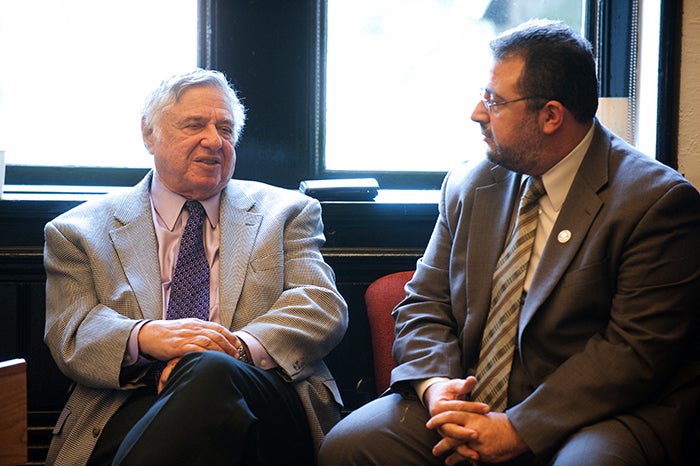
“The goal of interreligious dialogue,” White once said, “is not to just look for similarities, but to see the differences and be able to embrace the differences.”
Hendi shares a “first” with White as the first Muslim chaplain hired by a Catholic university.
“The rabbi was a close friend and an amazing confidant,” Hendi said. “He taught with integrity, and love for the truth.”
Students’ Best Selves
McManus had been with White recently – they had traveled together to Poland this past summer to visit the Jan Karski Educational Foundation’s sister organization in Warsaw. (Karski, the Polish World War II resistance movement fighter who taught at Georgetown for four decades until his death in 2000, made the first reports of Nazi atrocities to the Polish government and Western allies.)
“Rabbi White had a unique gift as a teacher,” McManus said. “He could draw out what was best in his students even before they asked him a question. The result was always the same – as they became their best selves at his invitation, they could only ask their best questions. Every professor envied this gift.”
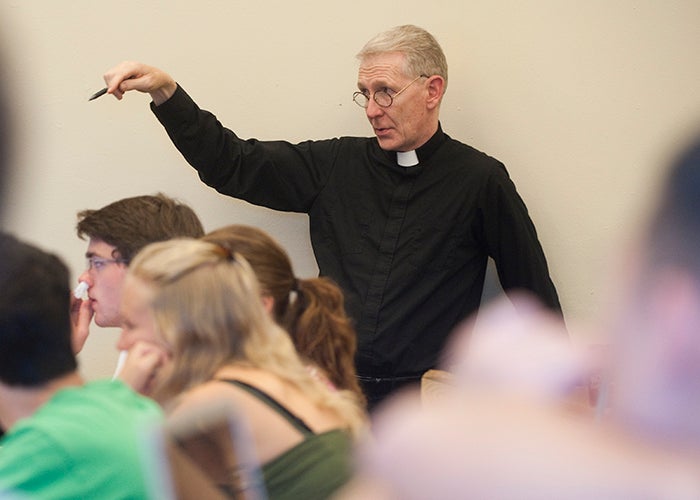
Shortly after White passed away following complications from a stroke, McManus received an email from Andrzej Rojak, a friend of the rabbi who heads the Karski Foundation in New York.
“I heard about the tragic stroke and thought about Harold every day, talked about him with friends who knew him and made our Karski community aware of this catastrophic incident,” Rojak wrote. “He opened his mind to building better relationships between Christians and Jews and he uniquely understood the issues facing these relationships in Poland.”
Touching Lives
Rojak also said he was the “first to help and advise” and was always available to speak at the conference, consult on a movie, participate in a panel or organize a trip to Poland.
“Harold, during his two trips to Poland earned almost a cult following yet remained modest and very respectful to everything he saw and everyone he met,” Rojak added. “We shall miss him immensely.”
Robert Burkett, a senior advisor to DeGioia, also was on the trip to Poland.
“I believe, I can’t prove it, but I believe that Rabbi White by virtue of being rabbi at Georgetown for 43 years probably ministered to more people than any other rabbi in the United States,” he says. “I think that he touched more lives, Jewish and non-Jewish, than any other rabbi in the pulpit.”
Hallelujah, Jesuit Shabbat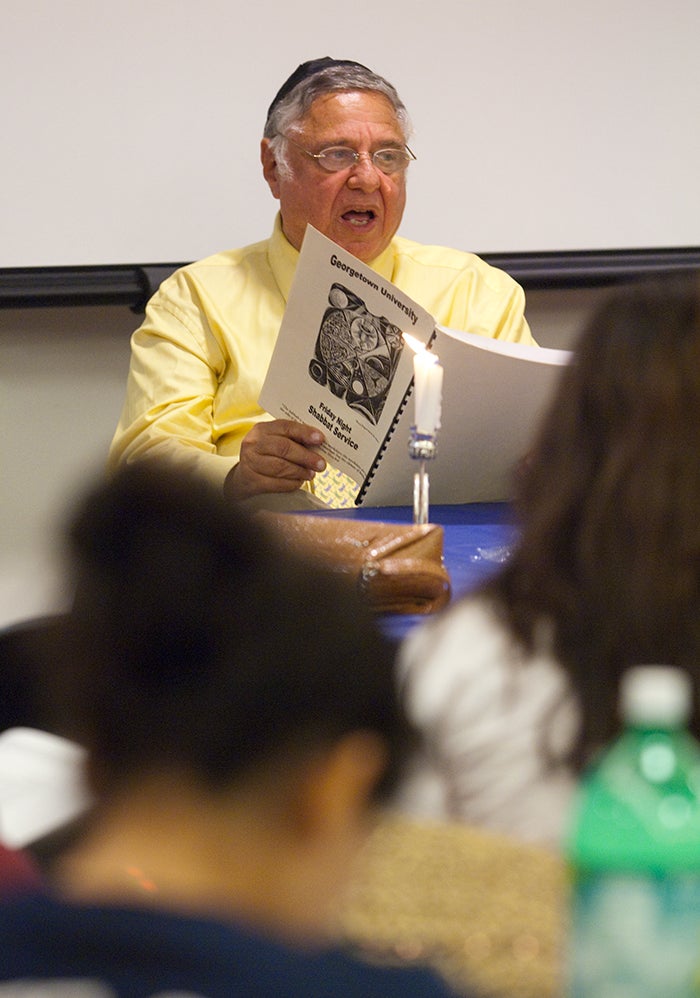
A tireless promoter of interreligious understanding, Rabbi White also started new traditions at Georgetown, including Hallelujah Shabbat, a traditional Shabbat service every January that invites choirs – including gospel choirs – to participate. And duringJesuit Heritage Week every February, he created a Jesuit Shabbat and invited Jesuits to share their personal religious journeys as he shared his own.
“Georgetown is unique,” White said in a Georgetown Witness to History video in 2008. “The leadership of this university are people who proudly affirm and assert their religious identity and that is what makes Georgetown so very, very special.”
Debbie Reichmann (B’93, L’97, G’16), was part of the Jewish chaplaincy at Georgetown between 2007 and 2014.
“Rabbi White was a teacher and mentor to many during his lifetime,” Reichmann wrote on Georgetown’s memorial site for White. “He also honored his teachers and mentors by sharing their teachings. One of these was Abraham Joshua Heschel, and one particular saying of Heschel’s Rabbi White shared with students, colleagues, and friends – often – [was] ‘Our goal should be to live life in radical amazement.’ ”
“The ability to see the extraordinary in the everyday and to share that insight with those around him was a gift from Rabbi White to the world,” Reichmann wrote. “He stayed young at heart, relating to Georgetown University students on a level that made nothing of the decades separating them. … [He] embodied the Georgetown spirit and he lived his life in radical amazement, so that we, too, could learn to do so.”
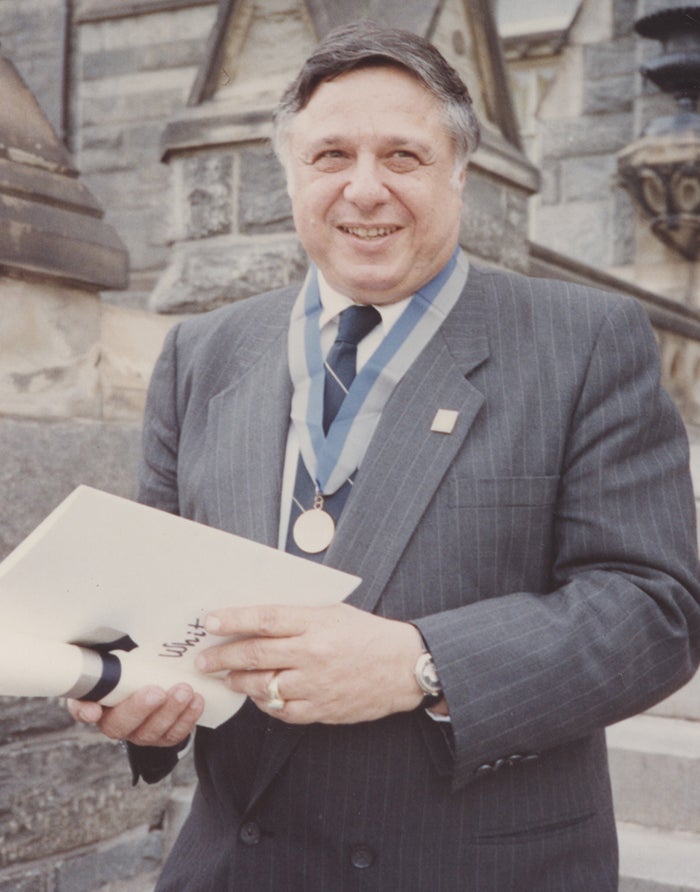
Encyclopedic Knowledge
Many Georgetown faculty members noted White’s encyclopedic knowledge of Judaism.
“Everything in the immense universe of Jewish civilization interested Rabbi White – from Kabbalah to the Jews of China, from Rabbinic Midrash to the more radical theologies that developed in the wake of the Holocaust, from the writings of Moses Maimonides to the philosophy of Martin Buber,” said Jacques Berlinerblau, director of SFS’ Program for Jewish Civilization (PJC). “In particular, Rabbi White was greatly influenced by the teachings of his mentor, Rabbi Mordecai Kaplan. He brought all of these influences to bear in his tireless work with generations of Georgetown students.”
Robert Lieber, a government and SFS professor, said White was the first person he talked to after being offered a position at Georgetown in the early 1980s.
“His sage advice and friendship were integral to my Georgetown experience and that of so many other faculty, students and alumni,” Lieber said. “Rabbi White was an inspiration for and one of the founders of the Program for Jewish Civilization … [He] lived to witness the PJC’s success, which this year is leading to its transformation into a major center. This accomplishment will be an enduring part of his legacy.”
Friend, Teacher, Rabbi, Therapist
The Karski Foundation was not by any means the only organization outside Georgetown that White was involved in, nor was his reach limited to inside the university gates.
He performed countless interfaith marriages throughout the Washington area, including many Georgetown students but also many who simply sought him out. The rabbi served as spiritual advisor to the Interfaith Families Project of Greater Washington, D.C., Area.
In his “spare time,” he served as scholar-in-residence at Holy Cross Abbey in Berryville, Virginia, and at Mercersburg Academy in Pennsylvania.
“To many of us,” wrote Jared Max Hendler (F’99) in a Facebook post, “he was a friend, a teacher, a Rabbi, a guidance counselor, a therapist and so much more. He made each of his thousand friends feel like they were the center of the universe. He was one of a kind.”
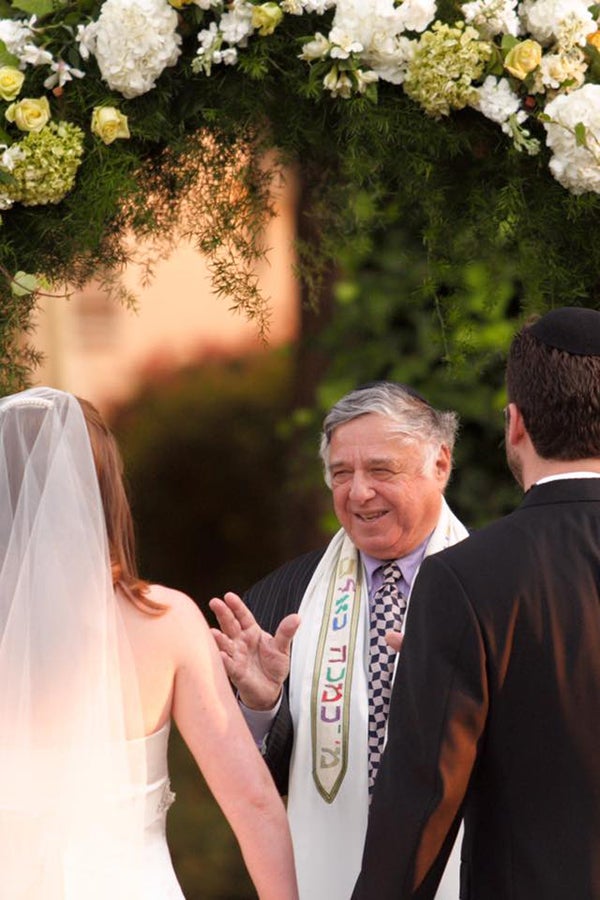
Israel Klein (C’99) also posted a tribute on Facebook.
“A handful of folks were able to visit the rabbi between his stroke and hospice care,” Klein wrote. “He spent his last days in a beautiful hospice facility on the Long Island Sound in Connecticut. He was surrounded by friends and family and natural beauty. … Emerson said ‘It is not length of life, but depth of life’ – Rabbi had both. He’s a person we were blessed to know and love.”
Interfaith Marriages
Erik Smulson (C’89), Georgetown’s vice president for public affairs, first met White as a child. The rabbi was a friend of his father, Mark Smulson, a longtime research scientist and professor of biochemistry at the university’s medical school who passed away four years ago.
“Rabbi White served generations of Hoyas,” said Smulson. “The High Holidays services that he created were the only free services in the city.”
Smulson recalls that Gaston Hall, where the services were held, was full of Jewish students, members of Congress, and interns from Capitol Hill who had no where else to go.
Respect and Faith
While a student at Georgetown, Smulson fell in love with Jennifer Beard (C’89), a Catholic.
Because both students valued their religious backgrounds, they asked White and a Catholic priest to marry them.
“For many years, he was the only rabbi willing to perform interfaith marriages,” says Smulson, now a father of three. “He met with me and Jen as we prepared for the wedding, and talked to us about love and respect and faith.”
A Great Light
The free High Holiday services continue under Georgetown’s Rabbi Rachel Gartner.
“A great light has gone out in the world,” Gartner said at a Jewish prayer service at Georgetown in White’s honor. “We knew Rabbi White by his smile and his work, his friendship and his leadership, his life and his vision.”
She said his Hebrew name meant “life” and “peace.”
“He really pursued peace and understanding really every day of his life,” Gartner added. “We were blessed to have him in our presence, and I know that we’ll carry his light on in our different ways and in all the work that we do.”
Georgetown will announce a larger memorial service in the near future.
Mutual Respect
Maryanne Lachat, a longtime associate professor in the School of Nursing & Health Studies, will celebrate her 40th wedding anniversary with her Jewish husband, Ken Bridbord, next year.
“There was concern in my family, not Ken’s, about the two religions,” Lachat explained. “Pre-nuptial meetings with the rabbi and Father Bob Regusek were very supportive of us not negating each other’s religion.”
The two were married in Georgetown’s Copley Formal Lounge in 1976, and the service integrated the liturgy from both religions.
“This combined ceremony was very unusual at that time,” Lachat added. “Rabbi White was a great support to me and Ken as we began our marital commitment to each other within a Judeo-Christian framework.”
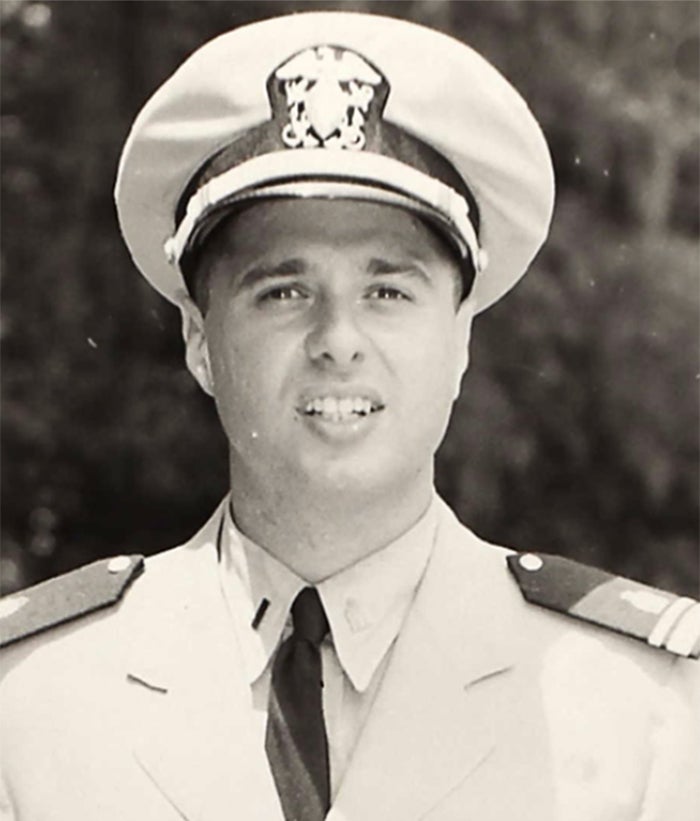
Student of Heschel, Buber
Born in 1932 in Hartford, Connecticut, White received his bachelor’s degree in philosophy from Wesleyan University, his rabbinical degree from the Jewish Theological Seminary and a certificate in pastoral counseling from Bellevue Hospital in New York City.
Prior to Georgetown, he was rabbi of Beth Israel Congregation in Ann Arbor, Michigan, as well as Jewish chaplain at St. Joseph Mercy Hospital and American University’s rabbi.
He served as a U.S. Navy Chaplain at Parris Island, SC and with the 7th Fleet in the Pacific.
At the seminary, he studied under the well-known Polish-born American Rabbi Abraham Joshua Heschel, considered one of the leading Jewish philosophers of the 20th century, as well as equally revered Jewish philosopher Martin Buber and Rabbi Mordecai Kaplan.
Harold White Chair
That was part of the attraction to Georgetown for Andrew Ammerman (C’72), a former Georgetown board of regents member whose family created the Harold White Chair in Jewish Civilization a few years ago.
“It was [Rabbi White’s] education that actually compelled me to take more studies with Harold,” Ammerman added, “because I knew he had studied with Heschel and other Wesleyans and I knew he loved Martin Buber, which I did.”
His father, the late H. Max Ammerman, graduated from Georgetown College in 1927 and Georgetown Law in 1932. He and his mother, Josephine Ammerman, who passed away this past November at 102, had a long friendship with White.
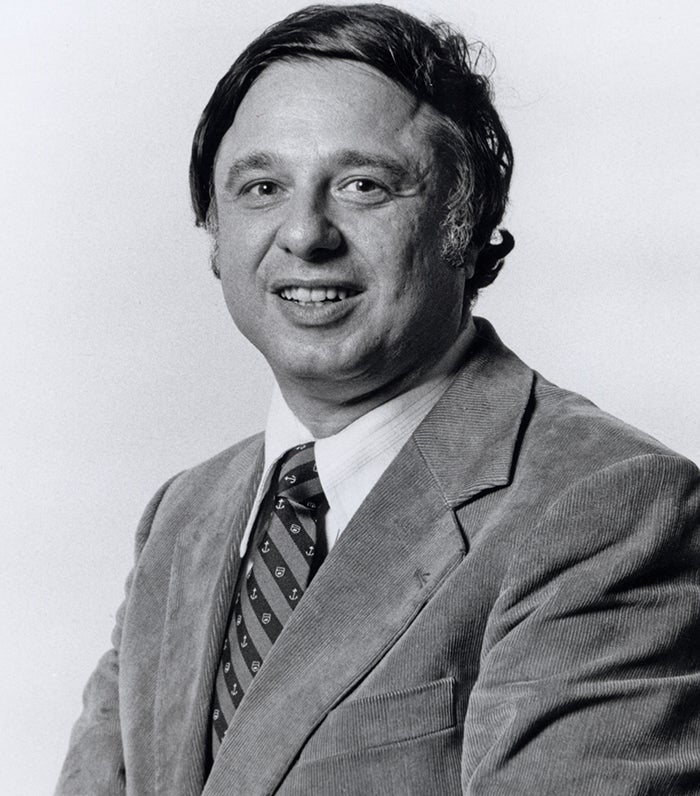
Intergenerational, International, Interreligious
“Harold made intergenerational friendships,” Ammerman said. “The only people who weren’t Harold’s friends were people he didn’t know.”
When he retired as rabbi from Georgetown in 2010, White was honored at a special dinner attended by DeGioia, Ammerman and his mother. The rabbi also was honored with a symposium and dinner in Washington given by Moment magazine, an independent Jewish periodical.
On the guest list at the Moment event was everyone from Holocaust survivor, author and Nobel Peace Prize-winner Elie Wiesel to New Yorker cartoon editor Robert Mankoff.
McManus was one of White’s closest friends.
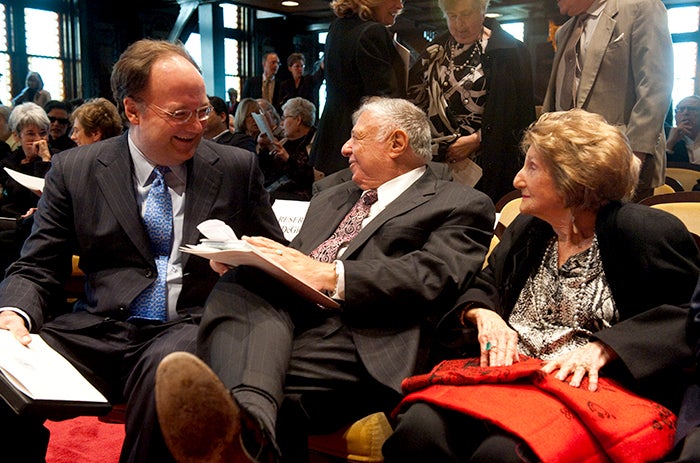
“As a friend, there was no better than Harold,” McManus said. “How many hours did we spend asking about each other’s needs, families, happiness and spirit? When one of us was low, the other was high. When one was discouraged, the other was hopeful. But here was the greatest gift of all – like true friends, we never missed a beat with each other, almost knowing ahead of time what the other would think or say, or what kindness he was about to offer.”
Before he passed away, Rabbi White asked that all donations in his name be made to the Program for Jewish Civilization.